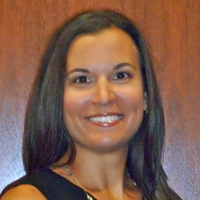Amanda Gunning
Mercy University, Science Education, Faculty Member
Research Interests:
Research Interests:
Research Interests:
Research Interests:
Research Interests:
Research Interests:
The teacher certification process can be overwhelming for early-career educators. Negotiating teacher identity, completing fieldwork hours, and navigating institutional expectations can stress the most resilient teacher candidates. These... more
The teacher certification process can be overwhelming for early-career educators. Negotiating teacher identity, completing fieldwork hours, and navigating institutional expectations can stress the most resilient teacher candidates. These pressures are further compounded as teacher certification assessments, such as the edTPA, introduce additional hurdles to achieving state licensure. This study approaches these obstacles by examining the stories of a diverse group of 14 early-career teachers as they reflect on completing edTPA and their current teaching practices. Through social constructivist perspectives and professional learning continuum framing, we interpreted narrative data to examine early-career teacher discussions of completing edTPA and developing pedagogical practices. These 14 teachers elucidated that the collaborative nature of their preparation program was integral to their completing the assessment, that the program approach to completing the portfolio assessment posi...
Research Interests:
Research Interests:
Students who are of low socio-economic status or English language learners do not have the same opportunities to learn science, technology, engineering and math (STEM). These students are the future citizenry and need the tools a good... more
Students who are of low socio-economic status or English language learners do not have the same opportunities to learn science, technology, engineering and math (STEM). These students are the future citizenry and need the tools a good STEM education can provide to, not only make decisions for themselves and their families, but for their communities and our world. Our study in the United States examined how working with English- and Spanish-speaking kindergarteners and their parents in science and engineering sessions provided the opportunity for these low-income families to do science and engineering activities together. We found the experiences helped students learn more about science, scientific practices, and developed science self-efficacy in parents, who changed the way they talked about everyday science with their children. The model of educating children and parents together, using their home languages, to promote STEM learning, builds upon the important work in this field.
Research Interests:
Research Interests:
This article is based on a presentation given at the International Week Conference, held at Padagogische Hochschule Niederosterreich, Baden, on June 1 st , 2016. In the United States, the Next Generation Science Standards (NGSS) represent... more
This article is based on a presentation given at the International Week Conference, held at Padagogische Hochschule Niederosterreich, Baden, on June 1 st , 2016. In the United States, the Next Generation Science Standards (NGSS) represent a major shift in the way that science is taught and learned in schools. One major part of this shift is the emphasis on a progression of scientific knowledge from K-12. We examine professional learning communities that are orientated to align with the vertical progressions of scientific knowledge emphasized in NGSS. Using qualitative methodology embedded in a constructivist theoretical framework, we describe our use of vertically aligned groups of science teachers constructed around a particular content area (earth science, biology, chemistry or physics). We present an overview of several emergent themes that we have identified from our data analysis.
Research Interests:
ABSTRACT This qualitative case study of 20 teachers enrolled in a two-year fellowship, examines the professional development of science teachers during participation in a professional learning community. Our professional development model... more
ABSTRACT This qualitative case study of 20 teachers enrolled in a two-year fellowship, examines the professional development of science teachers during participation in a professional learning community. Our professional development model specifically employs vertical teaming of teachers from elementary, middle, and high school levels to examine the progression of science content in K-12 classrooms. We describe science teachers’ perspective on how vertically aligned groups supported their professional development. Through qualitative analysis of five data sources, we found that the fellows showed increased appreciation for vertical articulation of science content in grades K-12 and attributed their professional growth to the experience of working with teachers at diverse grade levels. These findings have implications for professional development as it relates to NGSS.
Research Interests:
This article is based on a presentation given at the International Week Conference, held at Pädagogische Hochschule Niederösterreich, Baden, on June 1, 2016. In the United States, the Next Generation Science Standards (NGSS) represent a... more
This article is based on a presentation given at the International Week Conference, held at Pädagogische Hochschule Niederösterreich, Baden, on June 1, 2016. In the United States, the Next Generation Science Standards (NGSS) represent a major shift in the way that science is taught and learned in schools. One major part of this shift is the emphasis on a progression of scientific knowledge from K-12. We examine professional learning communities that are orientated to align with the vertical progressions of scientific knowledge emphasized in NGSS. Using qualitative methodology embedded in a constructivist theoretical framework, we describe our use of vertically aligned groups of science teachers constructed around a particular content area (earth science, biology, chemistry or physics). We present an overview of several emergent themes that we have identified from our data analysis.
Research Interests:
Research Interests:
This study examines the self-efficacy of one preservice elementary school teacher (Kasey) during and after her participation in Science in Childhood Education—a 16-week, elementary preservice science methods course. The case study of this... more
This study examines the self-efficacy of one preservice elementary school teacher (Kasey) during and after her participation in Science in Childhood Education—a 16-week, elementary preservice science methods course. The case study of this teacher is situated in the context of the class as a whole. This is accomplished through interviewing the one teacher and examining artifacts and observations of the
